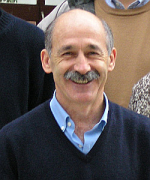 Professor Santiago Hernandez from the University of La Coruña in Spain and Adjunct Professor at WIT recently gave a series of seminars on Structural Optimisation.
Professor Santiago Hernandez from the University of La Coruña in Spain and Adjunct Professor at WIT recently gave a series of seminars on Structural Optimisation.
Professor Hernandez started by defining the steps of the Design Process in engineering, particularly the selection of structural systems and the designs.
He referred to the use of FEM and BEM based packages of structural analysis, implemented in a wide variety of computers. Their techniques are backed up by vast amounts of experience and experimental results.
An important point is how to decide the best initial design, how to compare results and how to decide when to end the process. Santiago analysed these ideas during his presentation, demonstrating the basic concepts with a series of simple case studies. They demonstrate the need to find the optimum design in an objective manner.
Santiago then referred to the early works on optimisation of structural continua and the work of Mitchell as well as that of A. Schmidt in the 1960s.
The different numerical optimisation techniques were classified by Santiago as follows:
Linear Programming
- Simplex method
- Interior points methods
- Penalty functions
- Feasible deviator
- Sequence of linear problems
- Sequence of convex approximations
- Sequence of quadratic approximations
- Genetic algorithms
- Neural networks
- Homogenezation methods
The general methods of optimisation were classified as:
Stochastic Methods
- Multistart
- Clustering
- Multiload
- Enumerator
- Cutting plane
- Break and Bond
- Biline programming
- Separable formulation
- Tunnelling
- Genetic algorithms
- Simulated Annealing
The current capabilities of structural optimisation in engineering practice can be summarised as follows:
- Cross-sectional optimisation
- Shape optimisation
- Size optimisation of trusses
- Size and geometry optimisation of trusses
- Size optimisation of frames
- Size and shape optimisation of frames
- Optimisation of shell structures
- Topology optimisation

 Wessex Institute
Wessex Institute